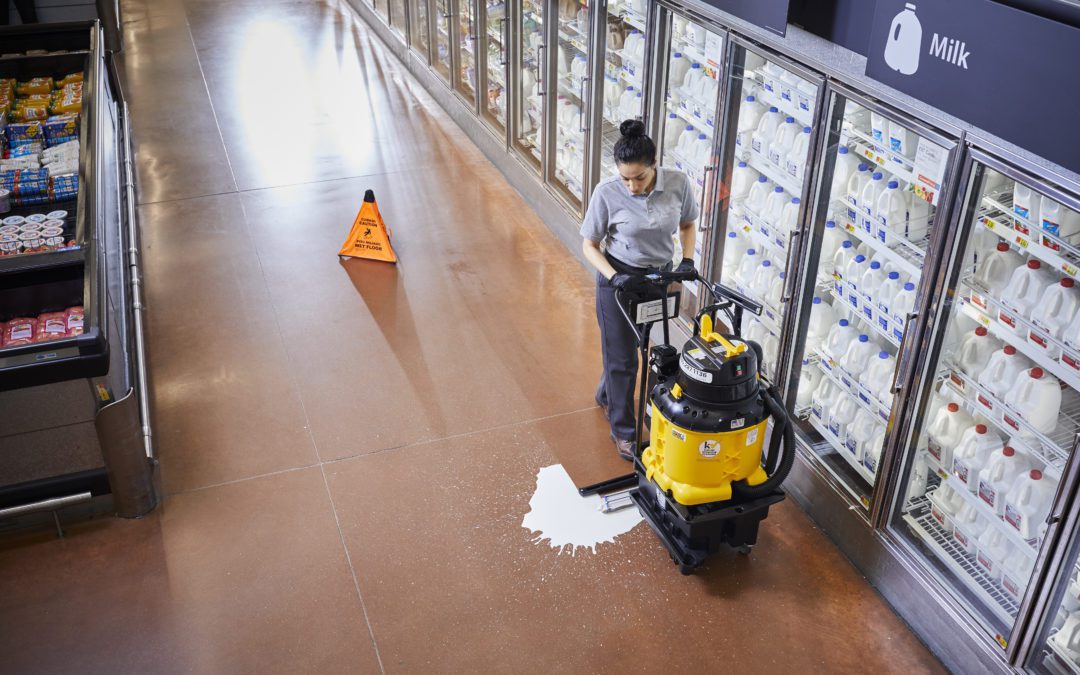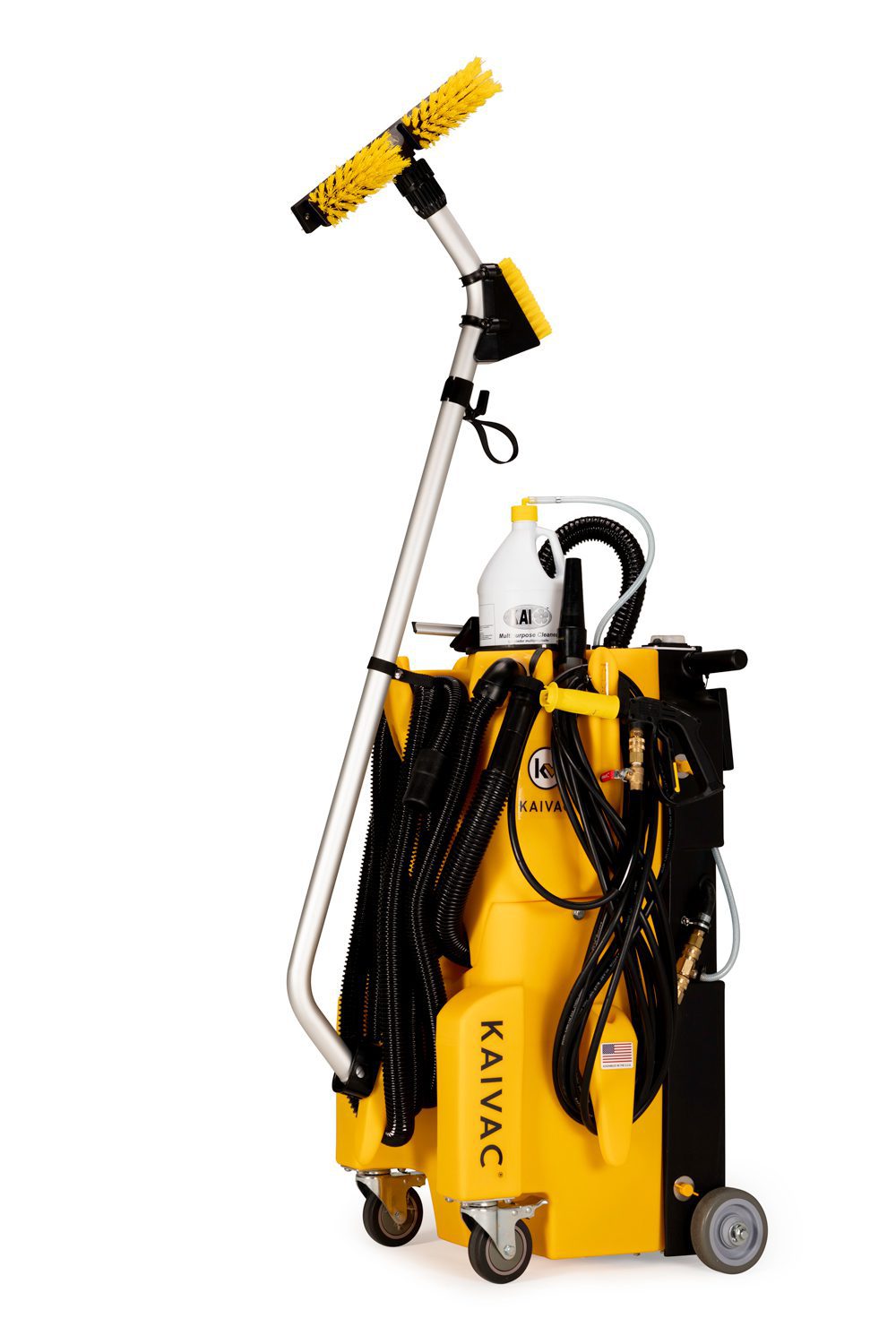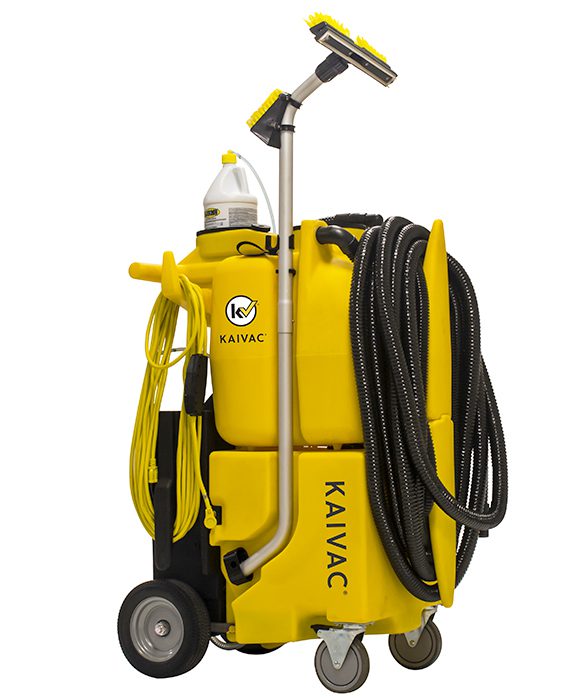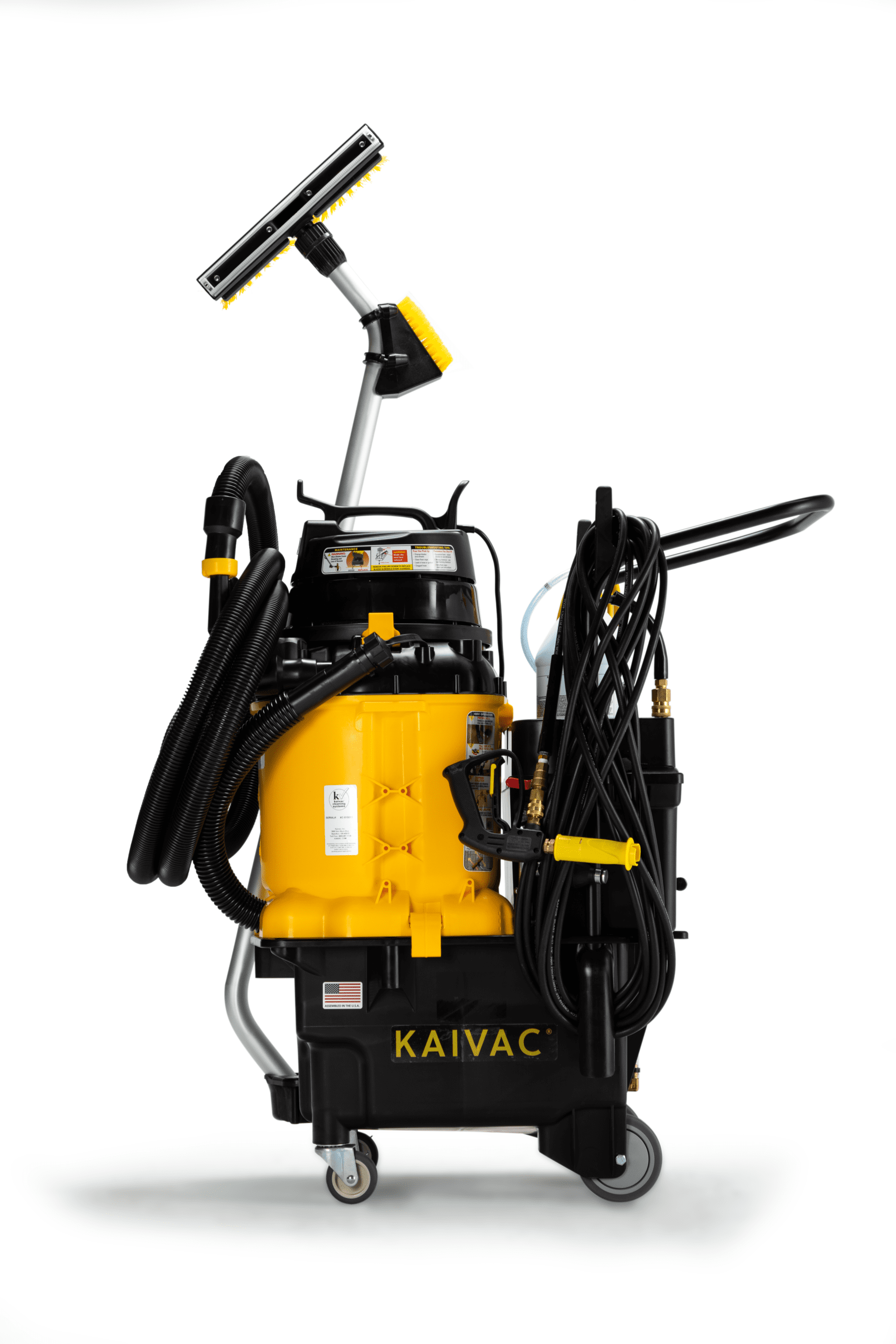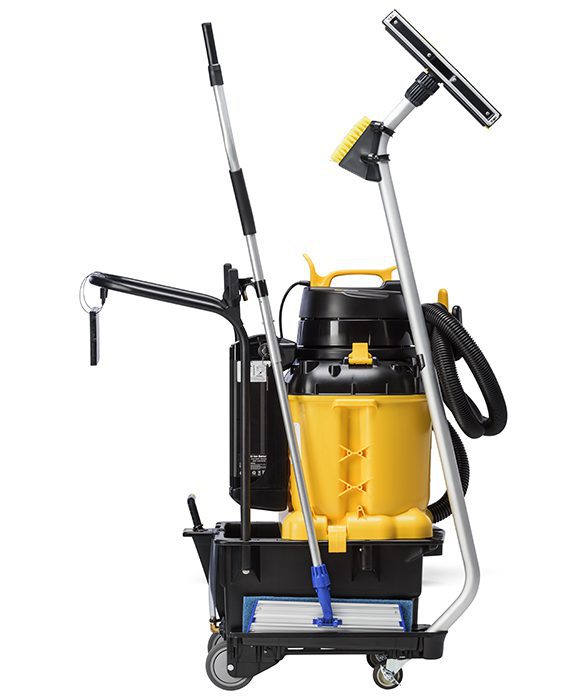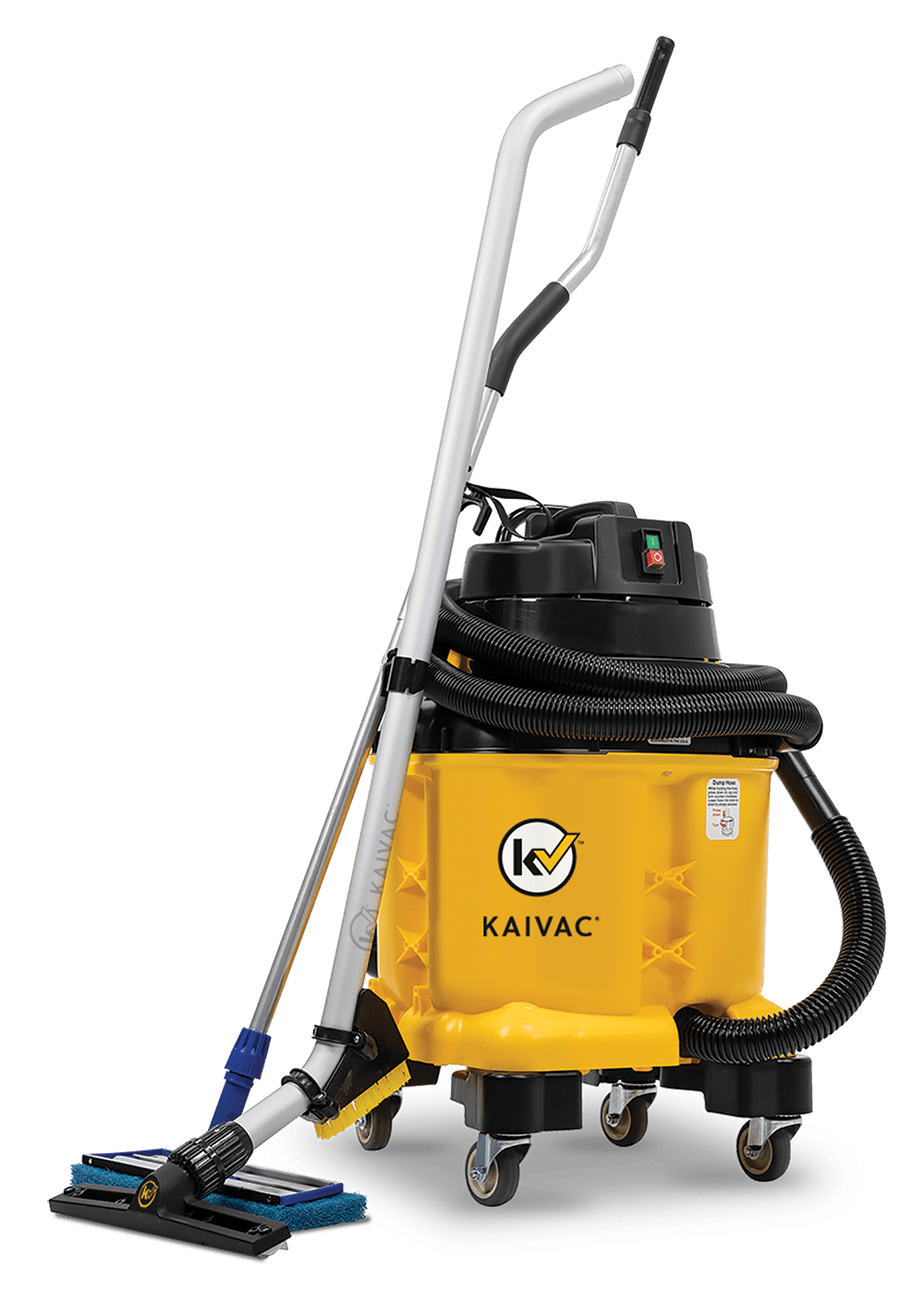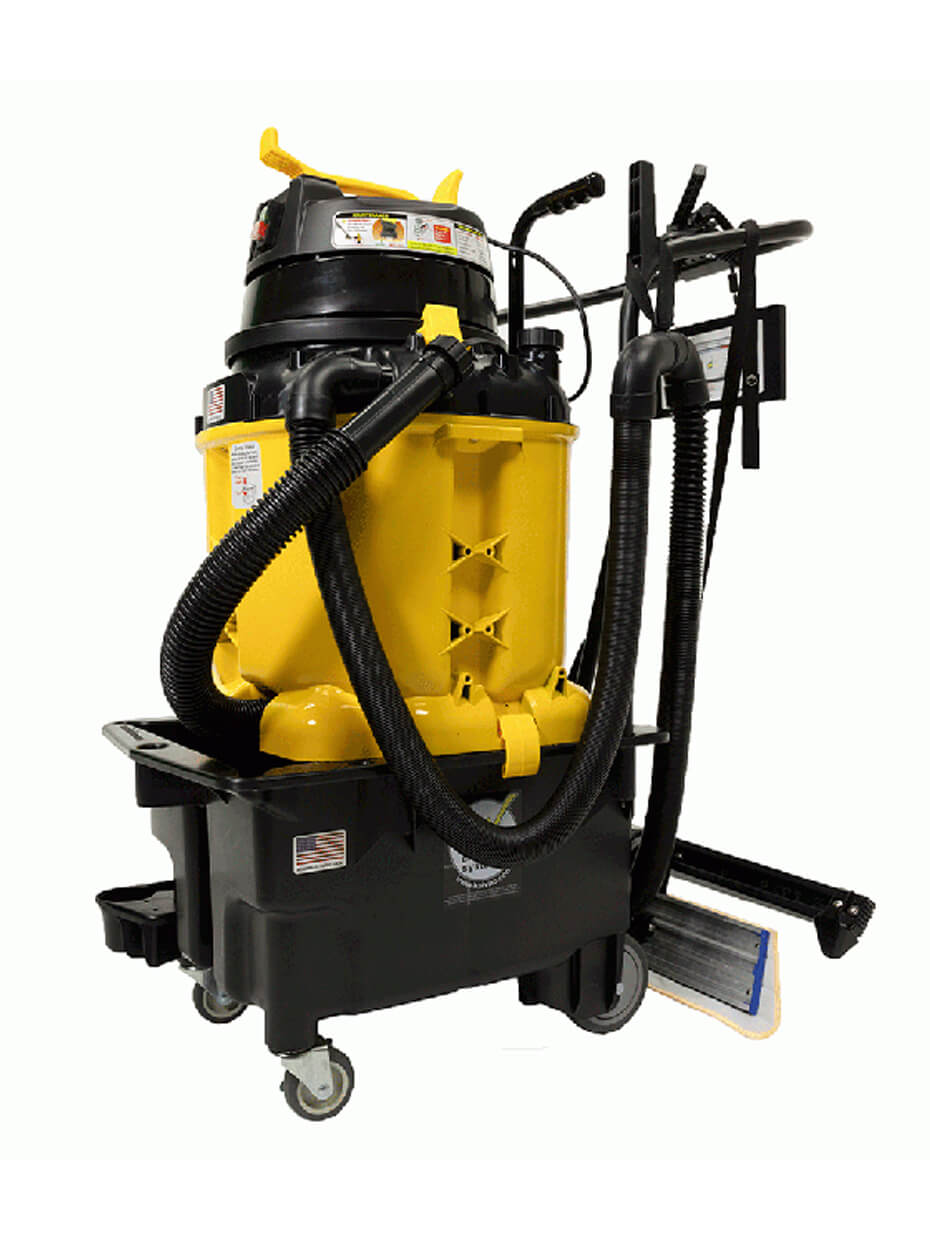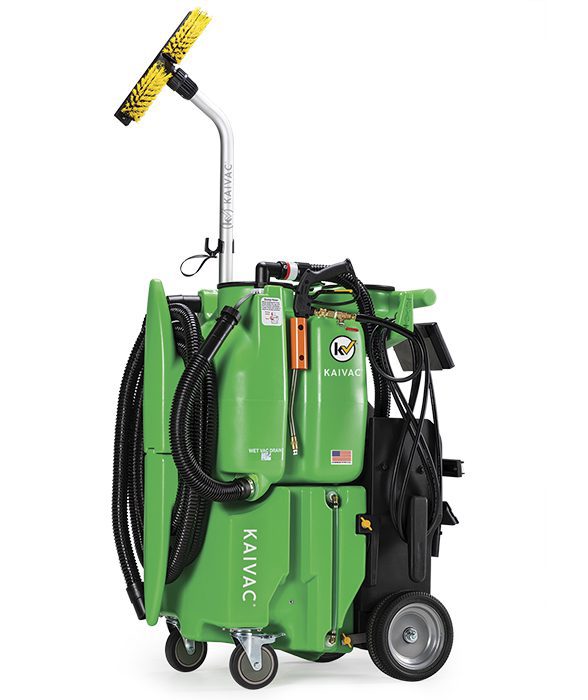Think of your commercial floors as your facility’s calling card, a giant canvas that reflects your institution’s culture, principals and goals. Your floor maintenance program can reflect your attention to details. A shiny surface, free of dirt and debris, projects competency and evokes trust. The floor telegraphs that the rest of the building is clean, sanitary and safe.
Conversely, a scuffed, dirty or dull floor will turn off customers, clients and staff the minute they step through the door. Unfortunately, this first impression is way more than skin deep. Studies show that facility appearance ratings can drop by a whopping 75 percent if floor shine creates a negative impression.
More than just a cosmetic issue, poor floor maintenance can really hurt your bottom line. Uncared for surfaces age faster and need repair or replacement sooner. And slip, trip and fall accidents can devastate a business with expensive lawsuits and worker’s compensation claims.
Fight back with a floor maintenance program that protects your people, reputation and bottom line.
Slip Trip and Falls: Causes and Costs
It does not take much to create slip, trip or fall hazard. More than half are due to problems with the walking surface, according to the National Floor Safety Institute. These problems could be caused by poor floor maintenance, spilled liquids and other messes or tracked in snow, rain or ice.
The organization also notes that:
- Falls account for over 8 million hospital emergency room visits, representing the leading cause of visits (21.3%)
- Slips and falls account for over 1 million visits, or 12% of total falls
- Slips and falls are the leading cause of workers’ compensation claims
- Slips and falls are the leading cause of occupational injury for people 55 and older
- According to the Consumer Product Safety Commission (CPSC), floors and flooring materials contribute directly to more than 2 million fall injuries each year
- 85% of worker’s compensation claims are attributed to employees slipping on slick floors (Industrial Safety & Occupational Health Markets 5th edition)
- 22% of slip/fall incidents resulted in more than 31 days away from work (US Bureau of Labor Statistics (2002)
- Compensation & medical costs associated with employee slip/fall accidents is approximately $70 billion annually (National Safety Council Injury Facts 2003 edition)
After considering the dangers and costs, creating a floor maintenance program for safety should be top of mind.
Bad Weather Leads to Dangerous Conditions
Winter is particularly hard on flooring surfaces. Dripping umbrellas, tracked in grit and melting snow create slip and fall hazards. Add road salt and ice melt to the mix and you have a corrosive combination the eats away at floor finishes, dulls carpeting and, depending on the chemical, creates a sticky or slippery mess.
Different chemicals can be used to melt ice. No matter which formula you choose be sure to clean up any residue that makes it into your facility or face a bigger mess in the future. The two most common ice-melting chemicals are:
- Sodium chloride: This will turn white and powdery and dull finishes if left on the floor too long.
- Calcium chloride and magnesium chloride: These choices leave an oily, slippery coating that attracts more dirt.
Mats—Fifteen Feet or Bust
Walk off matting is your first line of defense against winter weather. They scrape dirt, grit and salt off of shoes, catch moisture from dripping coats and protect occupants from dangerous–slips and falls. They also protect floor appearance by keeping grit from marring the finish
An effective floor maintenance system should have at least fifteen feet of matting, although some professionals suggest thirty feet, to remove 100% of debris from shoes.
Place mats at every entrance point for full protection. Instruct crews to vacuum them several times a day to remove abrasive grit and soils. Replace them once they become saturated with moisture and dirt.
Grocery Spills are Dangerous and Costly
Groceries must contend with both wet weather-related issues and spill dangers from broken product. The longer a spill remains on a floor the greater the risk of a customer or employee slipping and falling. And the danger isn’t limited to spills or broken glass jars. Leaky equipment is just as likely to cause a dangerous, and potentially expensive slip-and-fall accident.
Grocery spills could be from an obvious source; dropped drinks, broken bottles or smashed jars. Even overspray from produce misters can create slick walking surfaces. But trouble can also come from small, dry particulates like flour, rice and grains. These items act like tiny ball bearings, creating treacherous surface for walking.
Protocol demands that any spill should be cleaned up as soon as possible, but beware. Freshly-mopped, still-wet floors can pose as much of a hazard as the initial spill.
If you think putting out brightly-colored warning signs will protect your customers, think again. Ten percent of accidents are caused by tripping over the Wet Floor sign.
High-Performance Cleaning Solutions
What is the best way to maintain floors for appearance and safety? A bucket and mop are not realistic choices. Most floors are simply too big to cover with that technology. But mops don’t work well for small messes either as they can’t fully remove the spill and leave the floor wet.
Mops also increase the chance of dangerous cross-contamination, particularly if you use them in kitchens and restrooms.
Some professionals choose an autoscrubber to maintain their hard floors. This technology does a fairly good job. It removes soil better than a damp mop and may require less cleaning chemical.
But autoscrubbers come with their own challenges. They are expensive to buy and complicated to use. Get the procedure wrong and staff could damage the floor by accidently grinding dirt and particulates into the finish.
The technology also requires a lot of upkeep, meaning this expensive piece of equipment is often in the shop.
A Kaivac AutoVac Stretch™ offers a better solution. It works three to four times faster than a mop, cleans more completely and leaves floors dry, safe and ready to walk on.
The technology costs far less than a comparably-sized autoscrubber. It is also easy to learn and use, removing the chance of accidently grinding dirt, grit or road salts into the floor. And its simple, robust design means far less down time.
The AutoVac Stretch can also be used to strip and finish a floor.
Ready to see what a highly-versatile, advanced cleaning machine can do for your floor maintenance safety program? Read more here.
